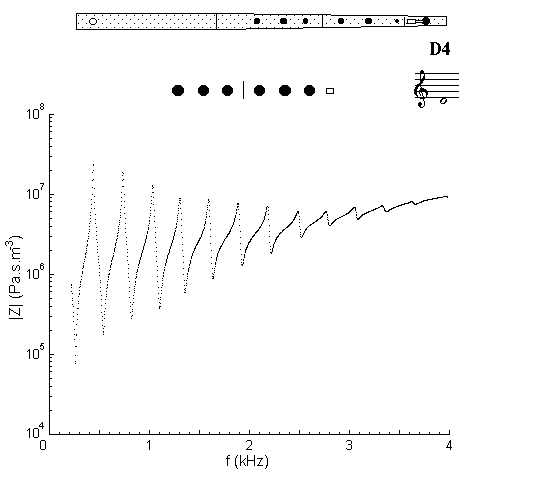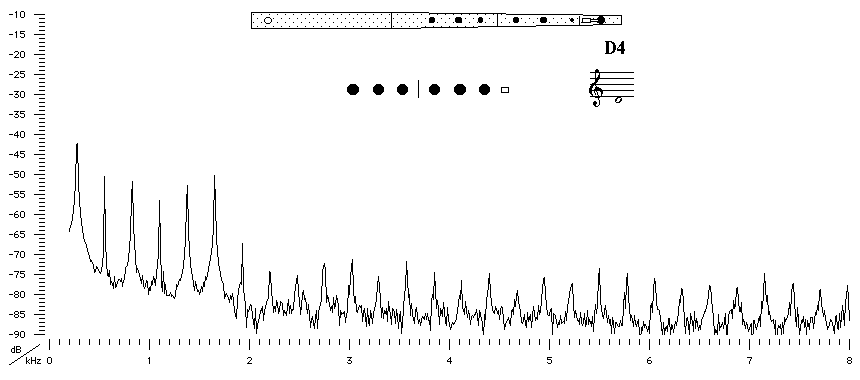| Acoustics of baroque, classical and modern flutes |
baroque flute |
D4 |

|
Acoustic and Fingering Schematic Non-specialist introduction
to acoustic impedance |
This is the lowest note on this flute. All tone holes are closed, so the bore most closely resembles a truncated cone on the end of a cylinder, and there is no filtering at high frequencies by an open tone-hole lattice. As a result, the regular series of minima (and maxima) in Z(f) extends to high frequencies. The gradual rise at high frequencies is due to the overall geometry: the chimney is in series with the parallel combination of the main part of the bore and the short section between the closed end and the embouchure. The first several minima can be played, but usually flute players only play the first on this particular note, for which the higher minima aid the production of harmonics. Details on the all-closed fingering at lowest note.
When we compare this with D4 on the classical flute and with B3 on the modern flute, we see that on the baroque instrument, both the maxima and minima become weaker at high frequencies. The effect is less pronounced on the classical instrument and least of all on the modern. Deeper minima and more nearly exact alignment with harmonics of the fundamental at high frequencies allow the higher harmonics to sound more strongly, so the shallow minima of the curve for the baroque flute contribute to its mellow or dark tone.

Sound spectrum
of a baroque flute played using fingering for D4 f.
![]()
![]()
![]()
![]() You can hear D4 f played by Matthew Ridley.
You can hear D4 f played by Matthew Ridley.

Sound spectrum
of a baroque flute played using fingering for D4
p.
![]()
![]()
![]()
![]() You can hear D4 p
played by Matthew Ridley.
You can hear D4 p
played by Matthew Ridley.
| Acoustic measurements are available for these flutes - modern B, modern C, classical C, classical D, classical flared, baroque Sound clips are available for modern B, classical flared and baroque |
To compare flutes, it is easiest to open a separate browser window for each instrument. |